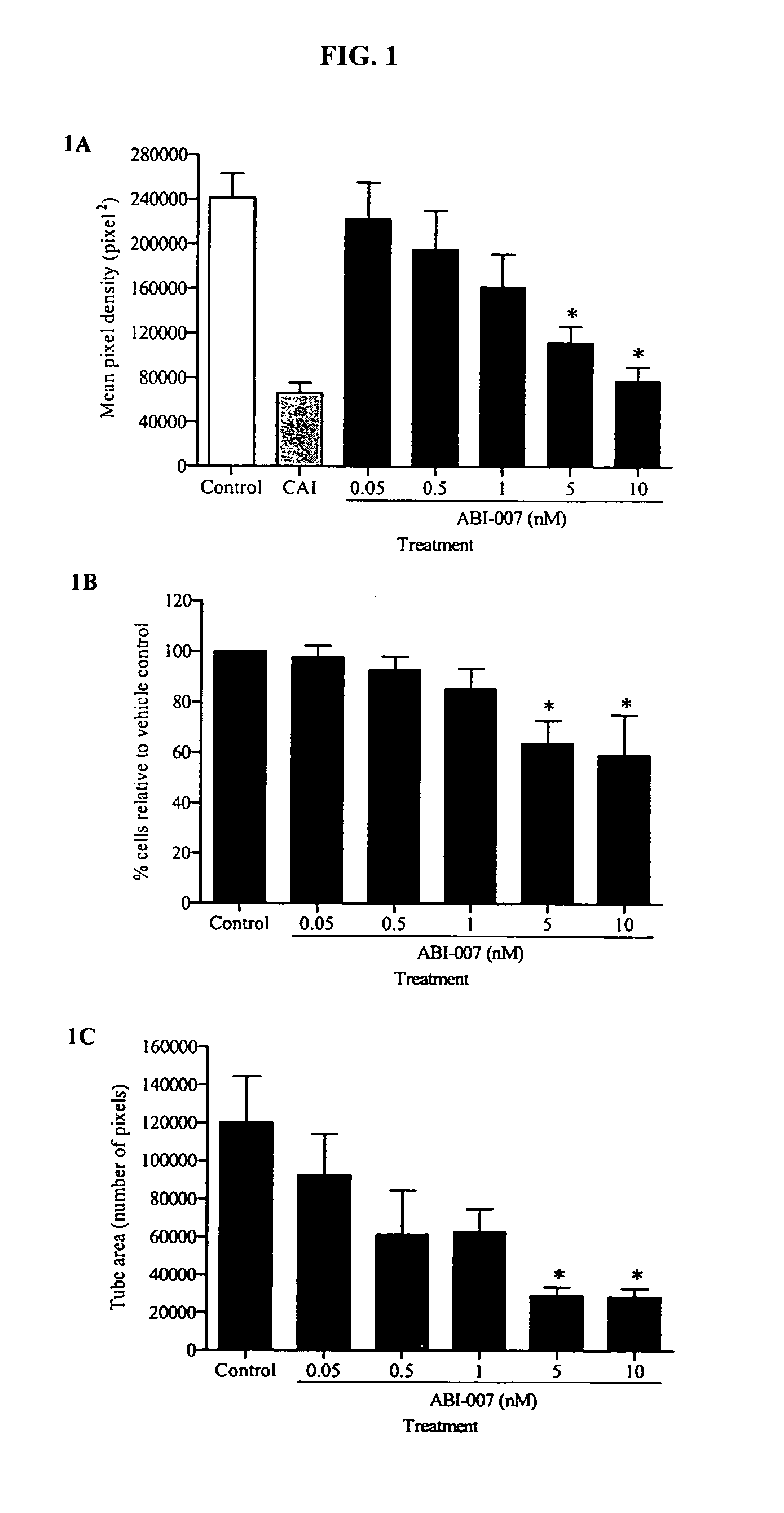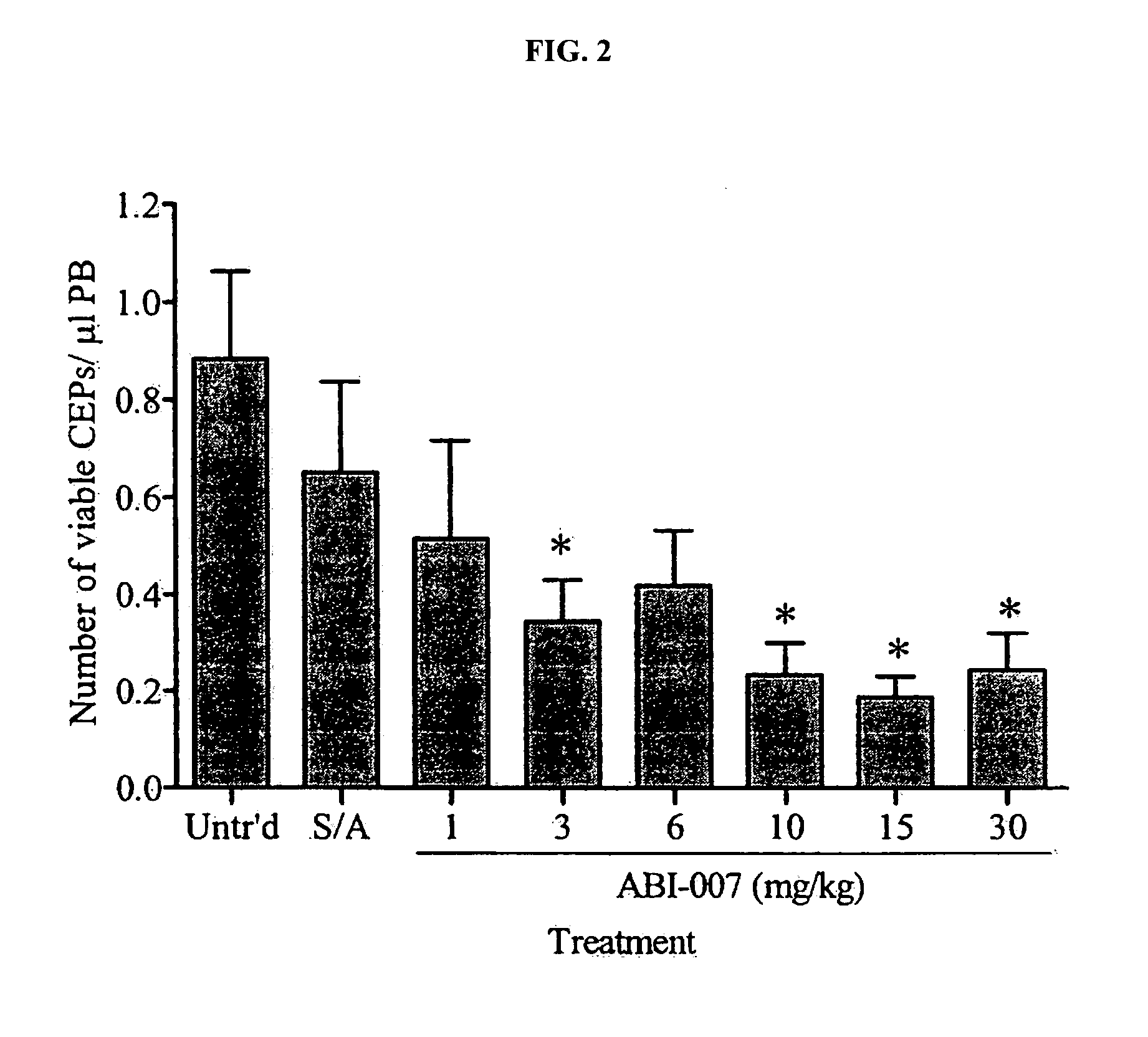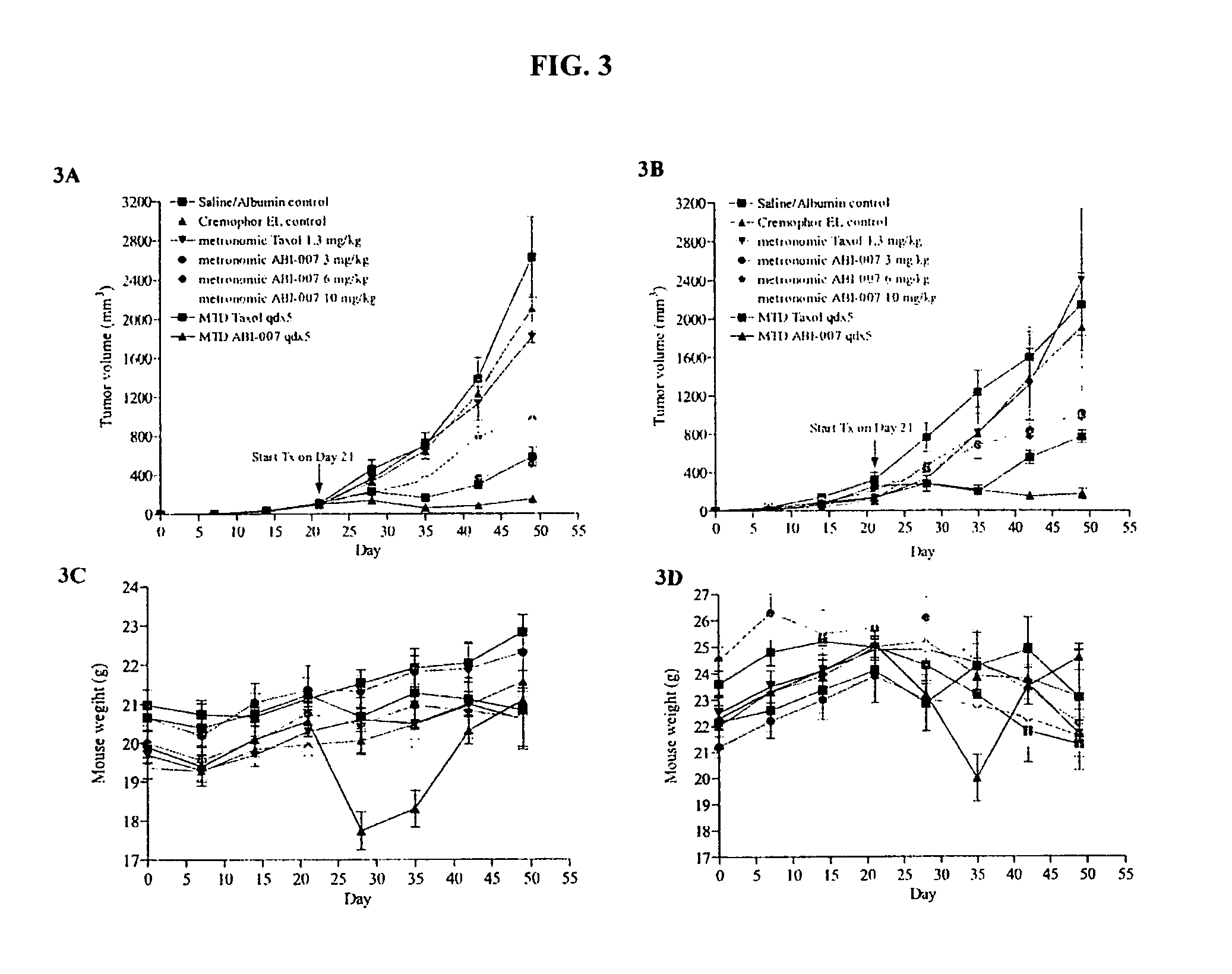Breast cancer therapy based on hormone receptor status with nanoparticles comprising taxane
a technology of hormone receptor and breast cancer, which is applied in the field of breast cancer treatment, can solve the problems of inability to treat tumors located in other areas, inaccessible to surgeons, and inability to respond to drug and/or radiation therapy for a significant number of tumors,
- Summary
- Abstract
- Description
- Claims
- Application Information
AI Technical Summary
Benefits of technology
Problems solved by technology
Method used
Image
Examples
example 1
Phase II Trial of Neoadjuvant Chemotherapy with Abraxane® Followed by 5-Fluorouracil, Epirubicin, and Cyclophosphamide (FEC) in Locally Advanced Breast Cancer
[0215]Abraxane® has greater efficacy and favorable toxicity compared with Cremophor-based paclitaxel on a every 3 weeks schedule (Gradishar W J, et al. (2005) J Clin Oncol 23:7794-7803). Weekly administration of Abraxane® has shown less toxicity than the every 3 weeks schedule and activity in taxane-refractory metastatic breast cancer (Blum J L, et al. (2004) J Clin Oncol 22:14 S, abstract 543). This trial was set up to determine the activity and safety profile of Abraxane® followed by 5-fluorouracil, Epirubicin, and cyclophosphamide (FEC) in women with locally advanced breast cancer (LABC).
[0216]66 women with LABC were administered preoperative Abraxane® at 100 mg / m2 weekly for 12 consecutive weeks, followed by FEC every 3 weeks for 4 cycles. If their breast cancer was HER2 negative (HER2−) the FEC was administered at a dosage...
example 2
Improved Response and Reduced Toxicities for Abraxane® Compared to Taxol® in a Phase III study of Abraxane® Given Every Three Weeks
[0222]Significantly reduced incidence of neutropenia and hypersensitivity, absence of requirement of steroid premedication, shorter duration of neuropathy, shorter infusion time and higher dose.
[0223]ABI-007 (Abraxane®), the first biologically interactive albumin-bound paclitaxel in a nanoparticle form, free of any solvent, was compared with Cremophor®-based paclitaxel (Taxol®) in individuals with metastatic breast cancer (MBC). This phase III study was performed to confirm the preclinical studies demonstrating superior efficacy and reduced toxicity of ABI-007 when compared with Taxol®. Individuals were randomly assigned to 3-week cycles of either ABI-007 260 mg / m2 (iv) over 30 minutes without premedication (n=229) or Taxol® 175 mg / m2 IV over 3 hours with premedication (n=225). ABI-007 demonstrated significantly higher response rates compared with Taxol®...
example 3
Weekly Abraxane® in Taxane-Refractory Metastatic Breast Cancer Individuals
[0224]A recent Phase II clinical study showed that weekly administration of Abraxane® (nanoparticle albumin-bound paclitaxel) at a dose of 125 mg / m2 resulted in long-term disease control in individuals with metastatic breast cancer whose disease had progressed while being treated with Taxol® or Taxotere® (that is, individuals who are taxane-refractory).
[0225]Abraxane® is believed to represent the first biologically interactive composition that exploits the receptor-mediated (gp60) pathway found to be integral to achieving high intracellular tumor concentrations of the active ingredient—paclitaxel. The Phase II study included 75 individuals with taxane-refractory metastatic breast cancer. Abraxane® was administered weekly via a 30-minute infusion at 125 mg / m2 without steroid / antihistamine premedication or G-CSF prophylaxis. Individuals received three weekly doses followed by one week of rest, repeated every 28 ...
PUM
| Property | Measurement | Unit |
|---|---|---|
| diameter | aaaaa | aaaaa |
| diameter | aaaaa | aaaaa |
| time | aaaaa | aaaaa |
Abstract
Description
Claims
Application Information
 Login to View More
Login to View More - R&D
- Intellectual Property
- Life Sciences
- Materials
- Tech Scout
- Unparalleled Data Quality
- Higher Quality Content
- 60% Fewer Hallucinations
Browse by: Latest US Patents, China's latest patents, Technical Efficacy Thesaurus, Application Domain, Technology Topic, Popular Technical Reports.
© 2025 PatSnap. All rights reserved.Legal|Privacy policy|Modern Slavery Act Transparency Statement|Sitemap|About US| Contact US: help@patsnap.com



